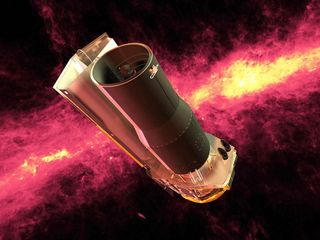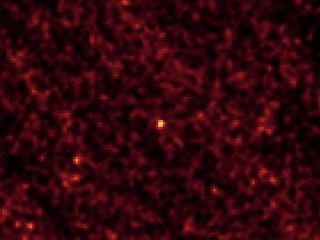
One of the leading candidates for NASA's ambitious asteroid-capture mission appears to be a pile of rubble.
New observations by NASA's Spitzer Space Telescope suggest that a space rock known as 2011 MD is a viable option to snag and drag into orbit around the moon, bringing the number of "valid candidates" for the mission at this point to six.
The data also allowed astronomers to calculate that 2011 MD is just one-third as dense as solid rock, indicating that two-thirds of the asteroid is empty space. [NASA's Asteroid-Capture Mission in Pictures]
"This is pretty unexpected, because traditionally people thought that small asteroids like 2011 MD are just single pieces of rock — single boulders floating in space," study lead author Michael Mommert, of Northern Arizona University in Flagstaff, told reporters Thursday (June 19).
Sizing up a space rock
It's tough to determine an asteroid's size using observations in visible light; a small, white object could appear brighter than a huge dark one, for example. But Spitzer is optimized to view in infrared wavelengths, which are much more reliable in this regard.

Using Spitzer observations of 2011 MD collected over a total of 20 hours in February of this year, Mommert and his colleagues concluded that the asteroid is about 20 feet (6 meters) wide, making it small enough to bag up and bring back to Earth with a robotic spacecraft.
Get the Space.com Newsletter
Breaking space news, the latest updates on rocket launches, skywatching events and more!
"You might actually be able to put this asteroid into your garage at home," Mommert said.
After combining Spitzer's images with observations of 2011 MD gathered by ground-based telescopes in visible light, the researchers were able to calculate the asteroid's mass, and thus its density.
Surprisingly, the asteroid is about as dense as water, suggesting that it's very porous. 2011 MD may be a "rubble pile" — a loose collection of medium-size rocks — or a single large rock surrounded by a cloud of dust and pebbles.
"Those are just two possibilities of what the object might look like. There might be other ones," Mommert said.
Capturing an asteroid
NASA is still planning out the details of its asteroid-capture mission, which seeks to drag a near-Earth asteroid into orbit around the moon using a robotic spacecraft. Once the rock has been placed in orbit, astronauts would visit it, perhaps multiple times, using the agency's Orion capsule and Space Launch System rocket.
The overall goal is to get astronauts to the captured asteroid by 2025, in order to meet a directive issued by President Barack Obama in 2010.
The agency is considering two main capture approaches: "Option A" would bag up an entire space rock less then 33 feet (10 m) in diameter, while "Option B" would snatch a boulder off a much bigger asteroid. So far, NASA has identified three "valid candidates," asteroids known to fit the capture criteria, for Option A and three for Option B, said Paul Chodas, a senior scientist in the Near-Earth Object Program Office at NASA's Jet Propulsion Laboratory in California.
The space agency will decide which option to pursue late this year, officials have said.
It's possible that none of the currently identified candidates will be the ultimate target of the mission. NASA expects to find one to two viable candidates per year for Option A and one per year for Option B, Chodas said.
A deep-space rendezvous with the target space rock will likely come in the early 2020s, so there's still time to search for more candidates, officials said.
"Our current schedule shows that we wouldn't need to actually make a final selection of a target until one year before launch," said Michele Gates, program director for the asteroid redirect mission.
Follow Mike Wall on Twitter @michaeldwall and Google+. Follow us @Spacedotcom, Facebook or Google+. Originally published on Space.com.
Join our Space Forums to keep talking space on the latest missions, night sky and more! And if you have a news tip, correction or comment, let us know at: community@space.com.

Michael Wall is a Senior Space Writer with Space.com and joined the team in 2010. He primarily covers exoplanets, spaceflight and military space, but has been known to dabble in the space art beat. His book about the search for alien life, "Out There," was published on Nov. 13, 2018. Before becoming a science writer, Michael worked as a herpetologist and wildlife biologist. He has a Ph.D. in evolutionary biology from the University of Sydney, Australia, a bachelor's degree from the University of Arizona, and a graduate certificate in science writing from the University of California, Santa Cruz. To find out what his latest project is, you can follow Michael on Twitter.
